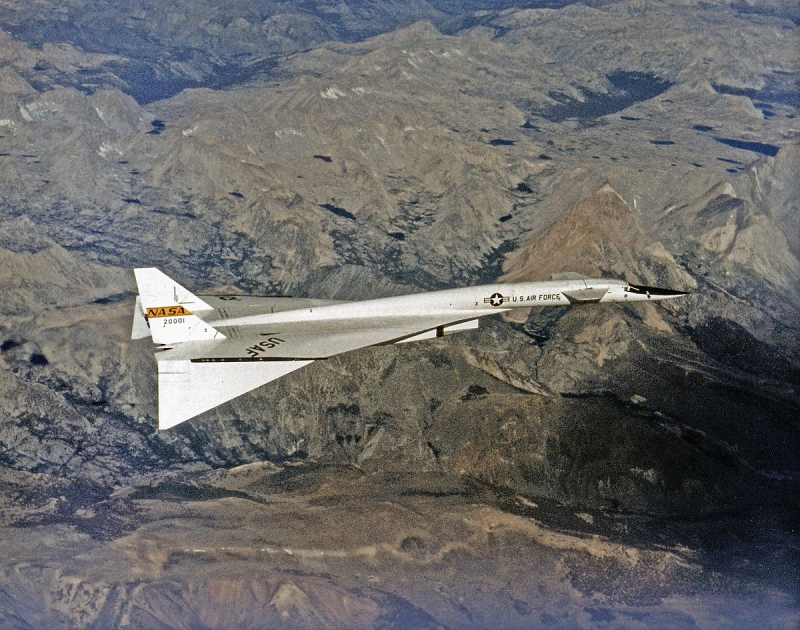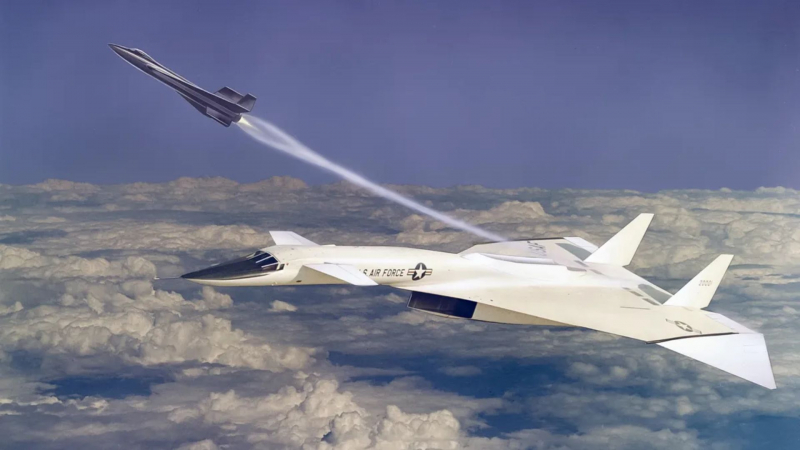XB-70 Valkyrie

The futuristic XB-70A was initially designed in the 1950s as a high-altitude, nuclear strike bomber with a Mach 3 flight speed (three times the speed of sound), rendering any possible adversary defenseless.
But by the start of the 1960s, brand-new Surface-to-Air Missiles (SAMs) posed a danger to the capacity of fast, high-altitude bombers to survive. Intercontinental Ballistic Missiles (ICBMs), which are less expensive, were also going into service. As a result, the pricey B-70 bomber program was abandoned in 1961 before any Valkyries were finished or sent into service.
Despite this, the US Air Force purchased two XB-70As to test the aerodynamics, propulsion, and other characteristics of large supersonic aircraft. The first XB-70A, which is on display here, flew in September 1964 and reached Mach 3 in October 1965. The second Valkyrie first flew in July 1965, but it was destroyed in June 1966 due to an unintentional mid-air collision. The third Valkyrie was never finished.
The first XB-70A airplane flew and collected valuable test data in the research program until it was donated to the museum in 1969.
Six engines power the XB-70 Valkyrie. It can accelerate a 240,000 kilogram aircraft to three times the speed of sound. As a result, the aircraft's surroundings become hot. Temperatures in some areas could even reach 330°C.
Its speed serves two distinct purposes. One, it is designed to travel at three times the speed of sound in order to escape Soviet aircraft. Second, it was designed to withstand a nuclear blast. Unlike the other planes on our list, only two were built. Furthermore, this model has already been retired.
Technical Notes
Engines: Six General Electric YJ93s of 30,000 lbs. thrust each with afterburner
Range: 4,288 miles
Service ceiling: 77,350 feetLength: 185 feet, 10 inches
Height: 30 feet, 9 inches
Weight: 534,700 lbs. loaded
Maximum speed: 2,056 mph (Mach 3.1) at 73,000 feet











